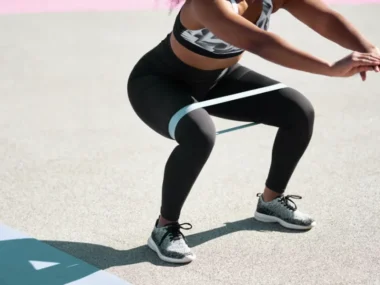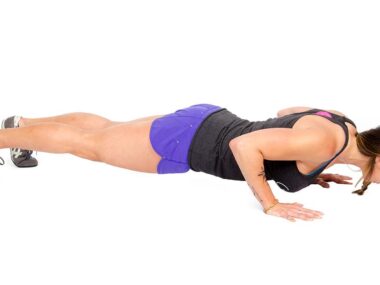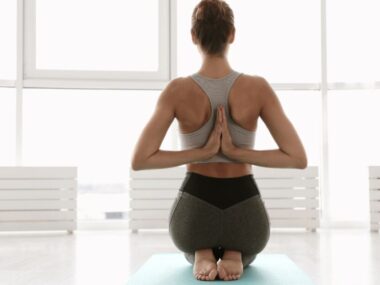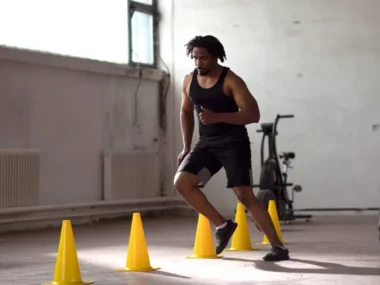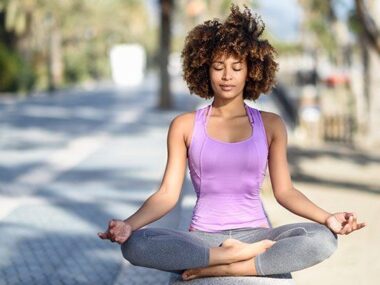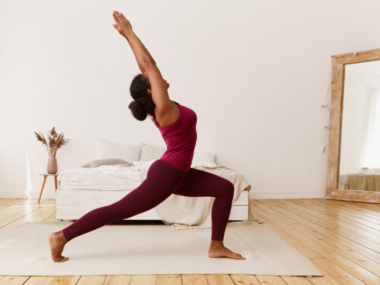Studies have shown that over 60 percent of American adults don’t get the adequate amount of physical activity and over 25 percent of adults are not active at all. From a busy schedule to not seeing results, there are enough reasons why people don’t Workout. But, of course, the benefits of getting and staying motivated to Exercise exceeds the downside. If you don’t regularly exercise and are hoping to change course, the first step is finding out what’s stopping you.
“There are many misconceptions about yoga that can make people scared of trying it,” says Judi Bar, the yoga program manager at Cleveland Clinic Wellness and Preventive Medicine, who has an individual yoga therapist certification (C-IAYT) from the International Association of Yoga Therapists and whose certificate is stamped by the Yoga Alliance, the world’s largest nonprofit yoga association that certifies teachers and schools.
There are some misconceptions that you can’t practice yoga if you aren’t flexible or you can’t touch your toes, she says. “They see pictures of a very fit younger individuals standing on one foot holding their hands over their head in a pose and think that yoga is out of the plate for them,” she says.
Those assumptions are in fact not correct, she says.
Yoga has evolved and changed significantly in the United States in the past two decades, says Bar. Although there are a lot of classes that are more competitive and challenging, there are also ones that accommodate every size, shape, medical condition, and age, she says. “Everyone can do yoga; you just have to locate the Class and teacher to fit your capabilities and needs.”
Before You Begin, Look for an Actual ‘Beginner’ Class
If possible, start with a location that’s close to your house or work. “If you choose a studio that’s a significant commute from your house, the reality is that you’ll probably have a hard time getting there on a regular basis,” says Bar.
Many yoga studios have a weekly or monthly beginner yoga class or series. These classes are designed for people who might feel intimidated by yoga and are looking for a safer approach rather than trying an all-level yoga class right away, says Stephanie Keach, the owner and founder of Asheville Yoga Center in Asheville, North Carolina, who is certified by Yoga Alliance, the world’s largest nonprofit yoga association that certifies teachers and schools.
“We cover breathing, moving slowly, and listening to your body,” she says. The class can also help debunk a few myths that social media can perpetuate, Keach adds. “It may surprise some people to learn that yoga is not just handstands on the beach while wearing a bikini.”
Sometimes studios promotes beginner classes, but there can be a lot of variation in that nomenclature, says Bar. “It might not mean beginner for the average person; it might be a class for a younger person, or someone who has some yoga experience,” she says. Talking to the instructor of the class you are interested in can help you determine if the class will be a good fit for you, adds Bar.
Attend Your First Class Early and, Once You are There, Ask Questions
When you have decide on the studio or fitness center, ask if you can observe the class or classes you are interested in, says Bar. “That can help answer a lot of your questions and help you know what to expect,” she says.
Though you should also feel free to jump right in and try out the class for yourself. Aim to be on time or early to give yourself time to get settled. “Part of the benefit yoga can bring is a sense of calm and an opportunity to observe how your body and mind is feeling,” Barr explains. If you can avoid rushing or being stressed, that will improve your experience, she says.
When you enter the yoga room, choose a spot to unroll your mat. If you have concerns about being able to do all the poses (more on that below) or you have health issues that may require a visit to the bathroom, you may want to place your mat toward the back of the room or close to the exit, Bar says.
And if you can, please let the instructor know it’s your first yoga class. Depending on the size of the class, he or she may be able to keep an eye on you in case you’re struggling or need extra instruction.
More First-Time Yoga FAQs
Want to know more? Here are other answers to questions frequently asked by first-time yogis.
What Should I Wear to a Yoga Class?
You don’t have to wear special yoga clothes unless you want to, says Barr. “What people wear to yoga has evolved because it tends to be easier to move if you don’t have a bulkier pant hanging down or your shirt falling in front of your face,” she says.
Basically, you want to wear clothes that you feel safe and comfortable in, says Barr. This could be yoga pants and a snug-fitting top, sweatpants and a sweatshirt, or shorts and a tank top or T-shirt, she says. “Some studios may have a dress code, so you may want to check the website or stop by the center before you attend class,” says Bar.
Do I Need to Bring Anything With Me to Yoga Class?
What you need to bring with you to class can vary from studio to studio, says Samantha Scupp, the founder and a teacher at Heatwise, a New York City hot yoga studio, who is certified by Yoga Alliance, the world’s largest nonprofit yoga association that certifies teachers and schools. It’s a good idea to check the website before you go, says Scupp. Some studios provide a mat, towel, and water, but many don’t, she adds.
If you’re planning on attending a class at your local YMCA, gym, or community center, check the schedule or call the front desk to find out what you’ll need to bring to be prepared.
What Should I Eat Before Yoga Class?
Because of all the movement of your torso, as well as other parts of your body, it’s not a good idea to have a full meal within two hours of practicing yoga, says Barr. If you do need a light snack or you’re taking a class shortly after you wake up in the morning, stick to simple carbs, energizing snacks, or foods that are easy to digest. You might experiment with which foods work best for you; toast, nut butters, bananas, or low fat yogurt are all good options before a workout.
What if I Can’t Do a Pose?
Obey your body and respect your limits; don’t do poses or movements that don’t feel safe or comfortable, says Bar. “It’s important to realize that you can get hurt doing yoga if you don’t listen to your body,” says Bar. If a teacher is asking you to do something that seems out of the range of your ability, it’s better to pass than to risk injury, she adds.
Instructors will often offer alternatives or adjustments to make poses more or less challenging, says Bar. If an option isn’t offered, it’s okay to ask for a modification that works for you (just be sure to be respectful and not disruptive to the instructor) — or just pause on the mat where you are, whether it be sitting or standing. “Stay still and take a breath and wait until the class is finished with that pose,” says Bar.
What if I Don’t Understand What the Teacher Is Asking Me to Do?
When teachers use Sanskrit terms and terminology it can be challenging for people at first, says Bar. Sanskrit is the original language of yoga, which many instructors do use. Even poses with familiar words — Warrior, Tree pose, Dead Bug pose — could leave you scratching your head.
If you attend a class and the instructor is using a lot of terms you don’t know and you’re having trouble keeping up, inquire about a more beginner-level class with a teacher who uses more basic language to describe the poses, says Bar. Many studios will offer beginner classes that will help you get to know basic Sanskrit terms over time, she says.
What if I Need to Use the Bathroom During Class?
If you have to use the bathroom, just quietly leave the room to go, says Bar. “If you think it’s likely that you’ll need to excuse yourself during class, make sure you know where the restroom is,” says Bar — and place your mat in a part of the room that will make leaving and reentering the room as easy as possible.
It’s cool if you need to duck out of the room if nature calls, Bar says. “Part of practicing yoga is knowing what you need and taking care of yourself.”
